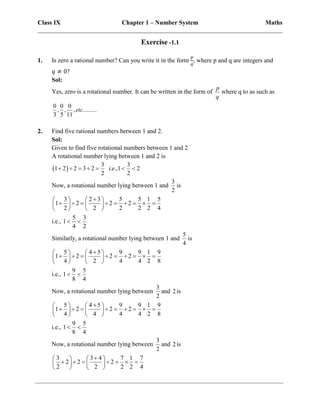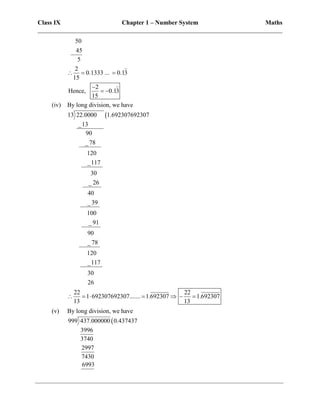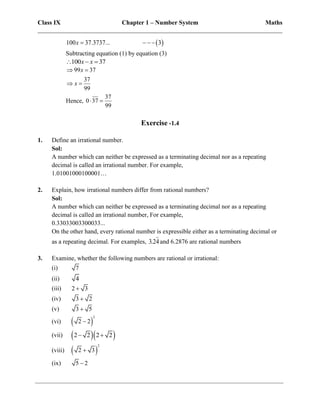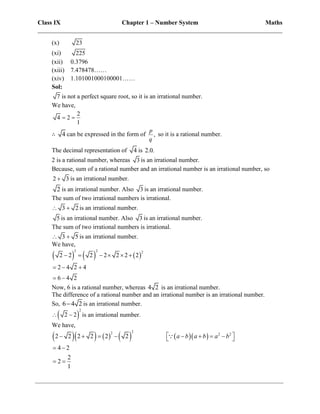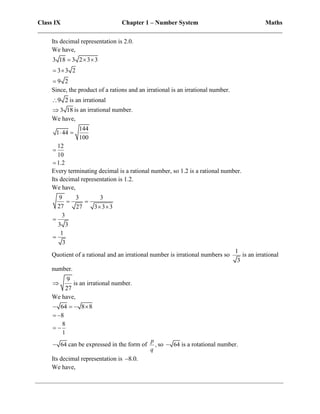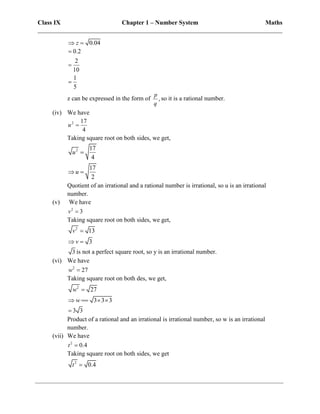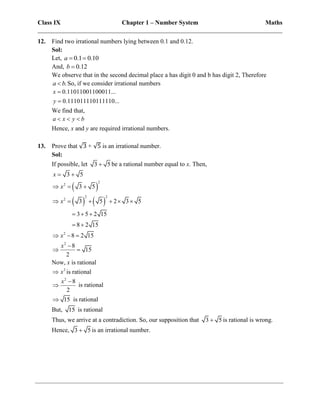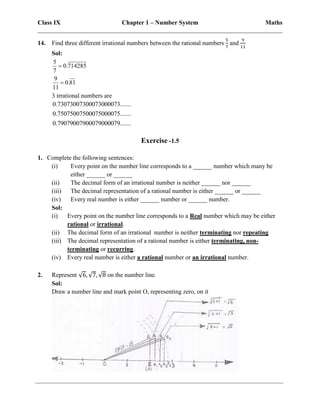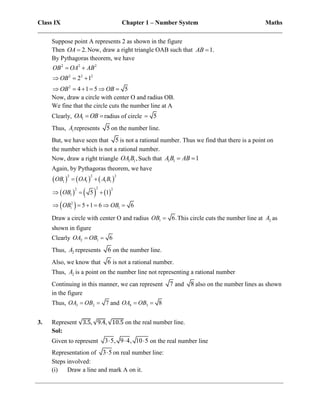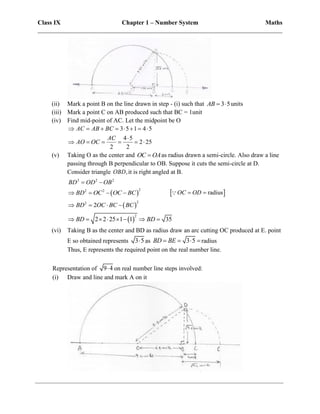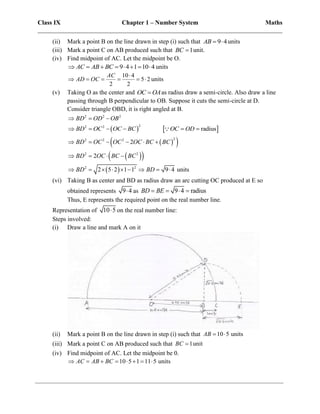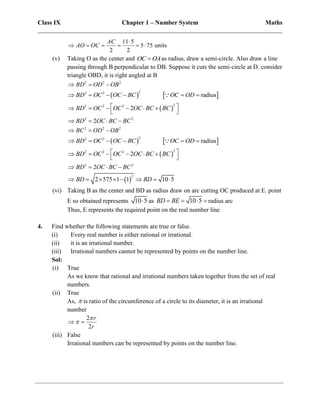Rational numbers can be expressed as fractions with integer numerators and denominators not equal to zero. Irrational numbers cannot be expressed as either terminating or repeating decimals. Some key differences between rational and irrational numbers are:
- Rational numbers can be written as fractions p/q, while irrational numbers have non-terminating and non-repeating decimal representations.
- The decimal representations of rational numbers either terminate or enter into a repeating pattern, while irrational numbers do not repeat or terminate.
- Examples of rational numbers are integers and fractions with integers in the numerator and denominator, while examples of irrational numbers include the square root of 2 and pi.
